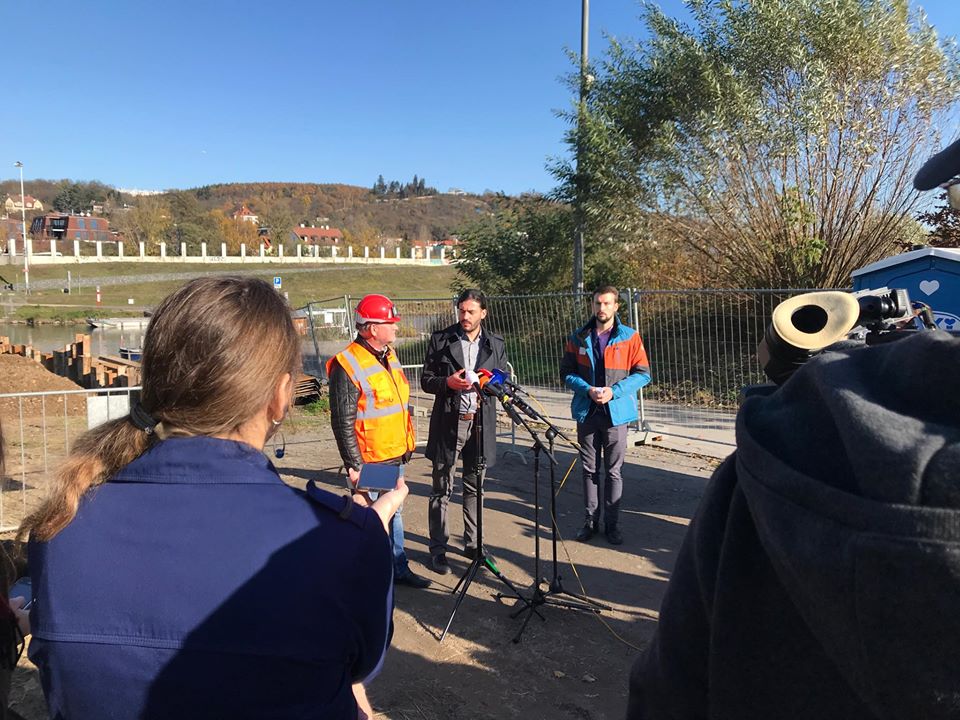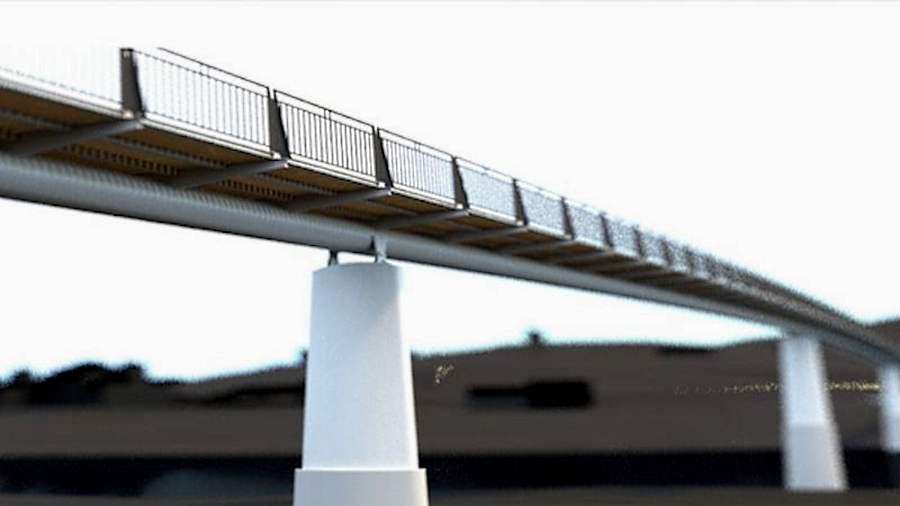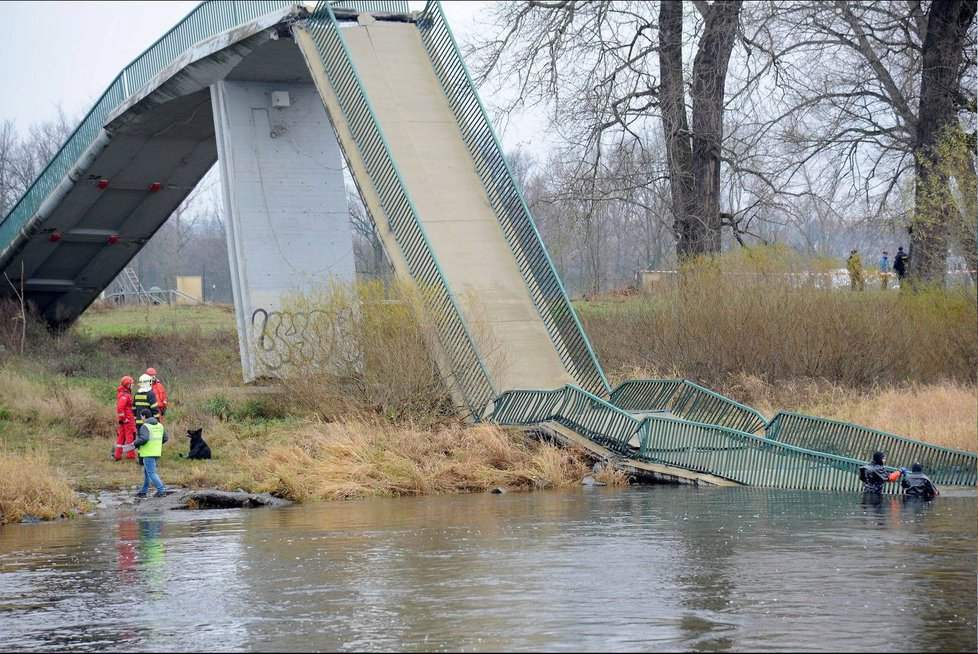A replacement for the collapsed footbridge linking Troja to Císařský ostrov is finally being built. The city announced on social media that Deputy Mayor Adam Scheinherr (Praha sobě) has handed the site over to contractors. The total cost of the new bridge will be 128,248,653 CZK, according to City Hall.
“Prague has started construction of a new Troja footbridge, which will replace the original collapsed bridge. The new footbridge will have a steel construction with a life span of 100 years and will serve pedestrians, cyclists and roller skaters. Completion of construction is expected by the end of 2020.” City Hall said on Twitter.
“Compared to the original one, it will not corrode from the inside and its condition can be effectively monitored,” City Hall added on Facebook.
Praha zahájila výstavbu nové Trojské lávky, která nahradí původní zřícené přemostění. Nová lávka bude mít ocelovou konstrukci s životností 100 let a sloužit bude pěším, cyklistům a vyznavačům kolečkových bruslí. Dokončení stavby předpokládáme do konce roku 2020. pic.twitter.com/1LXdEqQMkC
— Hlavní město Praha (@PrahaEU) November 7, 2019
The bridge makes it easier to walk from Bubeneč in Prague 7 to the Prague Zoo and Troja Chateau. The new footbridge will link Troja to Císařský ostrov. Another small footbridge links Císařský ostrov to Stromovka, a large city park that has good access via public transportation.
“We are catching up with the debts of the past in Prague. Construction of a similar size and character usually takes about four years from the beginning of the competition of the processors to the finished construction. We managed to shorten this process by one year. The new Troja footbridge will be at least four meters wide and will now be able to serve pedestrians and cyclists. If necessary, the Integrated Rescue System vehicle will also pass over it,” Scheinherr said, according to the City Hall website.
The lack of the Troja footbridge has been blamed for a slump in visitors to Prague Zoo. Currently a ferry takes people from Císařský ostrov to Troja.

The city at the end of August selected SMP CZ, part of the Vinci Group, to be the contractor for the new bridge. The selection was based not only on price. The bidders on the contract had to show that they were capable of completing such a project both financially and technically.
“Troja footbridge is one of several construction projects that SMP CZ wants to contribute to improving the quality of transport in the capital. As a purely bridge construction company, this project is a continuation of the construction and repairs of a number of bridge structures in Prague — bridges on the Prague ring road, repair of the Nusle Bridge, or even the repair of the Charles Bridge,” Pavel Kameník, a spokesman for SMP CZ, said.

The collapsed footbridge will be replaced by a new steel-reinforced structure designed to provide easy access to the steel wire ropes so their current condition can be determined effectively.
The contract includes, among other things, land preparation, approach areas, staircases, electric lighting and greenery treatments.
“Prague needs just such quality bridges. All Prague residents know the debt that the city owes to its bridges. … I have strengthened the inspection of bridges, and renovations are now being determined due to more detailed technical surveys. We also carry out load tests, thanks to which we know the bridges in detail and plan the renovations faster and in better quality,” Scheinherr said when the selection of the contractor was announced.

Before the previous bridge collapsed in December 2017, injuring four people, it was found to be in poor condition. A 2014 examination showed that corrosion of the steel support cables had weakened the bridge. In 2011, the last time the bridge was repaired, engineers said it had between five and seven years of use left.
The failed bridge, designed by architect Jiří Stráský, was completed in 1984. It replaced a bridge that was destroyed in a flood in 1981.
The collapse of the Troja footbridge drew attention to the overall condition of bridges in the city. Almost one-fifth of the 700 bridges in Prague were found to be in poor, very poor or emergency condition, according to a 2018 report submitted to City Hall’s Transportation Committee by the Technical Roadways Administration (TSK).












 Reading time: 3 minutes
Reading time: 3 minutes 



























